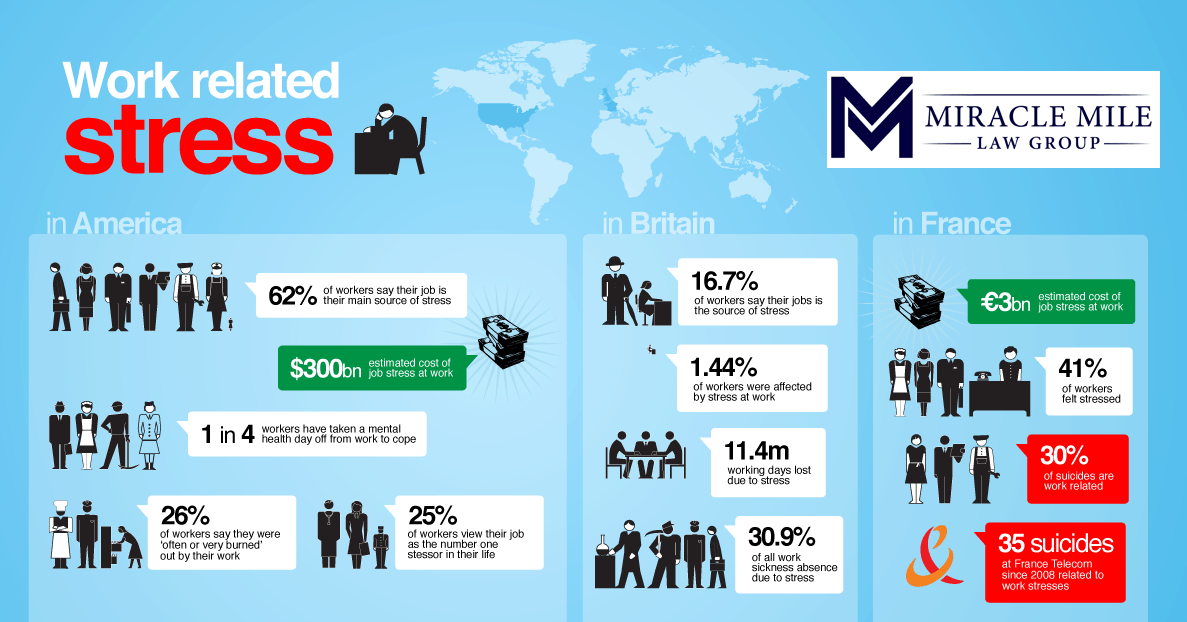Mental distress in the workplace is an increasingly prevalent issue that can dramatically affect an employee’s quality of life, productivity, and overall mental health. The unfortunate reality is that many individuals endure stressful work environments that can lead to significant emotional and psychological harm. Consequently, the question often arises: “Can you sue an employer for mental distress?” This inquiry not only addresses a legal concern but also probes the intertwined nature of workplace policies, employee rights, and mental health considerations.
To understand the intricacies of this issue, it’s crucial to define what constitutes mental distress in a work setting. Mental distress can manifest as anxiety, depression, post-traumatic stress disorder (PTSD), or an exacerbation of existing mental health conditions. These conditions may arise from various detrimental workplace factors, such as harassment, discrimination, overwhelming work demands, or a toxic organizational culture. The array of stressors can severely impact an employee’s ability to perform effectively and enjoy a fulfilling life outside of work.
Legally speaking, the ability to sue an employer for mental distress hinges on specific circumstances. Most often, claims of mental distress are tied to broader legal principles, such as negligence, intentional infliction of emotional distress, or violations of labor laws. Success in these cases typically requires the demonstration of several key elements.
First, there has to be the existence of an employer-employee relationship. This connection forms the foundation upon which claims can be built. Employers have a legal fiduciary responsibility to create a safe and non-hostile work environment. When they fail to uphold this duty, they may be held liable for the consequences that ensue.
Next, the plaintiff must demonstrate that the employer’s conduct was not only negligent but also egregious enough to warrant a lawsuit. This may involve proving that the employer was aware of injurious conditions and grossly neglected to address them. Examples include ignoring reports of harassment or failing to implement adequate safety measures that contribute to psychological distress. It’s pivotal to highlight that merely experiencing stress does not equate to legal grounds for a lawsuit; the alleged distress must stem from a tangible wrongdoing by the employer.
Importantly, documenting instances of mental distress is critical in any legal action. An employee must be equipped with comprehensive evidence—such as emails, recorded conversations, or witness testimonials—that can substantiate claims of detrimental behavior from their employer. Additionally, medical records that illustrate the psychological impact of the workplace environment can significantly bolster a case. This evidence serves not only as vital documentation but also underscores the severity of the distress experienced by the employee.
Moreover, intentional infliction of emotional distress can also be a route for legal recourse. This type of claim asserts that the employer engaged in extreme or outrageous conduct designed to inflict emotional suffering. For example, when an employer deliberately fosters a hostile atmosphere or conducts themselves in a way that blatantly disregards employees’ emotional well-being, affected individuals may have a valid claim. Again, the burden of proof lies firmly on the employee to illustrate the employer’s malicious intent or negligent conduct.
In many instances, these distress claims can intertwine with workplace discrimination or harassment cases. For instance, if an employee is subjected to racial or sexual harassment that leads to significant emotional fallout, that individual may seek redress not only for harassment but also for the resultant mental distress. Laws such as the Americans with Disabilities Act (ADA) or Title VII of the Civil Rights Act mandate that employers accommodate those suffering from mental health conditions, further strengthening the argument for litigation in cases of mental distress.
It’s also worth noting the potential repercussions of pursuing legal action against an employer. Employees should consider the emotional toll of litigation, which can be a lengthy and psychologically taxing process. Additionally, there can be real-world implications for the employee’s career. Fear of retaliation or negative repercussions from the employer may deter individuals from speaking out. Employers may not only defend themselves vigorously in court but may also take countermeasures that can impact the employee’s future employment prospects.
Negotiation or mediation can often serve as more amicable alternatives to litigation. Many companies now include conflict resolution procedures in their employee handbooks, providing a pathway for employees to address their concerns without resorting to the courtroom. This option frequently yields faster resolutions and can provide a sense of closure without the adversarial nature of a lawsuit. However, employees should proceed cautiously, as these processes may lack the formality and legal protections afforded in a court setting.
The broader implications of these issues reveal a societal fascination with mental health in the workplace. Public discourse surrounding mental well-being has grown significantly, with advocacy groups pushing for stronger protections against workplace bullying, harassment, and distress. In a world increasingly attuned to mental health, understanding one’s rights within the workplace becomes imperative. Employees must remain informed about the potential recourse available to them if they find themselves in distressing situations.
In conclusion, while it is possible to sue an employer for mental distress, the pathway is fraught with legal and emotional complexities. Employees must navigate the nuances of workplace law, carefully documenting their experiences and considering both the risks and benefits of legal action. The workplace is not merely a transactional space; it is an environment that profoundly affects the human psyche. Recognizing the potential for distress and taking appropriate action is vital for fostering healthier work environments in the future.
